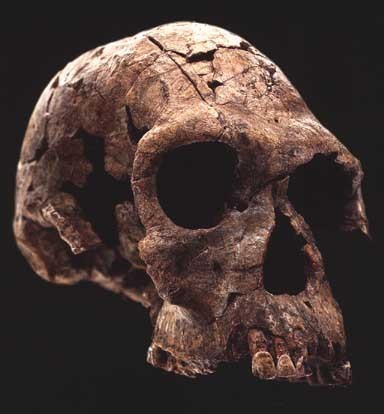
The Leakeys discovered Homo habilis first early in the 1960s. This is the tool-making man we have alluded to earlier, and by some accounts he is considered to be the first true hominid. I say some because several experts, including Richard Leakey, think that this Handy Man, too, should be classified as an australopithecine. Above is one reconstructed fossil skull, the rest of the fossils, in “restored form” can be seen here. According to the fossil record there are remains extant from about 15-20 “individuals”. Many debates persist over the classification of most of these fossils, as to whether they belong to Handy Man at all.
From the record we see that archaeologists have found these remains in Ethiopia, Kenya, South Africa, and Tanzania. I will discuss them by location, and bear in mind this location is usually indicated by the prefix in front of the fossil number.
The Ethiopian fossil is only one, AL666-1 a maxilla:
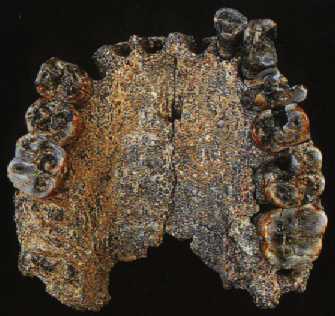
This is it from Ethiopia, the entire fossil evidence. In comparison, I would like to show this photo below, which demonstrates good enough the difference between the maxillae of various creatures:
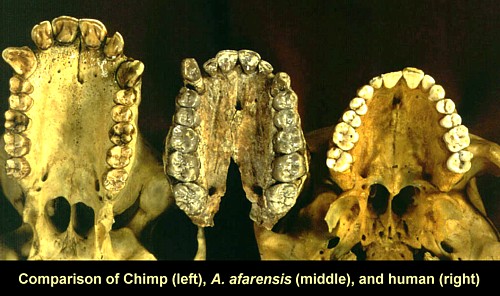
Were we to fill in the blanks in our sample fossil, clearly this Ethiopian evidence would look like that of a chimp, or the ape afarensis, rather than a human. Also by this photo you can see the similarity of afarensis to the chimp, another reason justifying our calling them apes.
The Handy Man finds in Kenya are a bit more numerous and purportedly more indicative of a new “strain” of hominid. Here are the primary specimens:
KNMER-164 is just garbage and useless, it could be anything from any creature.
KNMER-731 a similarly inconsequential mandible fragment with significant classification problems.
KNMER-739 I have not been able to find anywhere, it is supposed to be a right humerus but is not recognized in many fossil record databases.
KNMER-817 is supposed to be “mandible fragments” with the caveat (also) that they are especially “difficult to identify” and again, I have seen no evidence of them.
KNMER-992 is a mandible fragment that was found in two pieces which do not match exactly and suggest missing pieces, in any case it is completely simian in characteristics.
KNMER-1472 as you will read if you click that source is just part of a human leg and simply categorized as Handy Man (sometimes) because it was found in the same strata as other alleged habilis specimens – I am not sure the actual bones still exist, I have only been able to find reproductions and drawings, same for –
KNMER 1481, all we have is fragments.
KNMER-1474, purportedly a “cranial fragment” I have yet to see, probably at best another bone spur, the claim is it could be an australopithecus piece.
KNMER-1500 is a series of badly fragmented and impartial bones that have apparently been reclassified anyway.
KNMER-1501 and KNMER-1502 are “mandible fragments” few people have ever seen.
KNMER-1503-1507 series of samples have been classified also with the australopithecines by many scientists, they are mandible fragments, and various leg parts.
KNMER-7330 is very elusive to find and according to scientists is now placed with Australopithecus.
KNMER-3950, 3954, 5429, and 5877 are more disjointed mandible fragments that could have came from any ape.
KNMER-3735 and 1808 are said to be “partial skeletons” although I am still searching for actual physical evidence for these Leakey and K. Kimeau productions;, indications are these were/are bits and pieces of a prehistoric chimpanzee (please let me know if you see any evidence of these unseen finds).
KNMER-3228 is a partial hip fragment, whereabouts or exact taxonomy debated or unknown, it is often included with Homo erectus, which we will get to later, and sometimes even as australopithecus.
In fact, KNMER-1805 and KNMER-1813 are the only real finds in Kenya that could possibly point to the existence of any Handy Man. 1805 is fragmentary and problematic with regards to classification. A picture of the reconstructed 1805 skull heads this chapter. I am going to post another, high resolution photograph of the sole evidence for 1813, so you can see it reconstructed close up, and recognize how much guesswork has gone into making it intelligible:
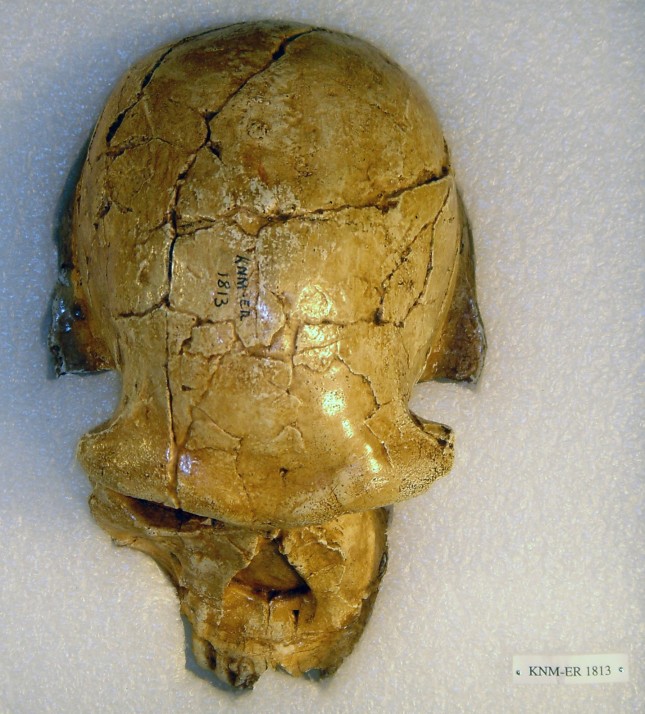
This is, yet another ape, and we can guess this because its brain capacity is said to be less than “that of other Homo habilis specimens, 510 cubic centimeters”. That is VERY funny! No, not that scientists can guess the brain capacity (but can you really tell its age by those teeth…?) , but rather humorous, if but in a sophomoric way, because, as we have seen, there is nothing to compare it to! What other complete habilis craniums do we have, other than the two or three reconstructions and partials we will come to soon enough? How can anyone make the claim, when this specimen is perhaps the best evidence we have? From the teeth, and mandibles, perhaps a leg fragment, can we really discern brain capacity? We must laugh, otherwise, we might just cry, this is so pitiful an excuse for science.
Here, our first look at the Artist’s Conceptions in homage to Handy Man. Notice how cavemen begin to be shown holding things, like sticks, or bones, and stones.
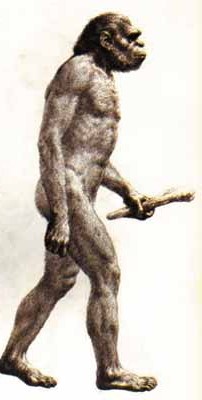
Seeing as the fertile grounds of Kenya have yet to bring us any real Handy Man harvest, we must then take a look at the proofs from South Africa and Tanzania. Let us do South Africa first because STW-53 and SK-847 are just pieces of cranium. Any hominid cranium, actually, would fit the bill.
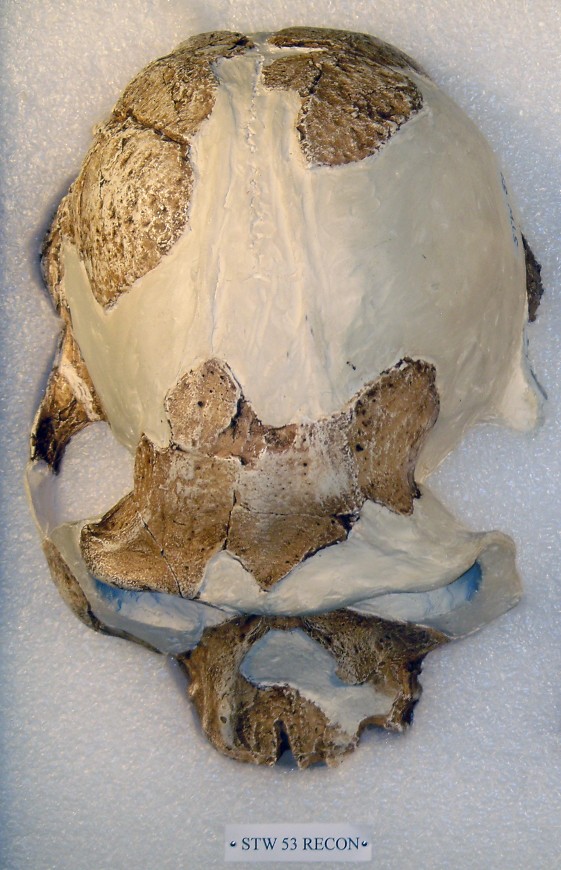
Here, in its draped beauty, STW-53. Again, none of that white stuff was found in the ground, that is filler supplied by wanna-be sculptors. And, in the end, what do we have? Yes another confused specimen that looks, well that looks like a human-made monstrosity.
Here, below, SK-47. Please be advised that SK-47 has been reclassified, by some, as Homo ergaster, who we will get to in short time. If you think this SK-47 is shabby, it’s nothing compared to STW-53 before the reconstruction:
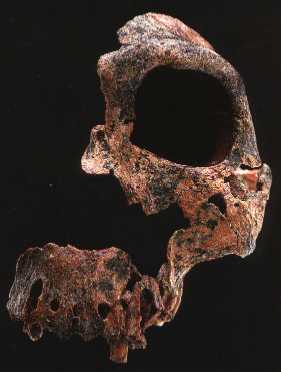
Is it human? Chimp? Ape? From 5000 years ago, or 1.5 million years ago? Well, they don’t know. Science likes to guess, and tell us with authority, but what does it really know here? I should say, let those who come after us and might read history know, that still in 2009 science has given us, with regards to the Origin of Man, absolutely nothing. We have adopted the new scientific method of flipping a coin and citing whichever side comes up as the Truth. Whichever, it makes no difference. Here yet another different reconstruction:
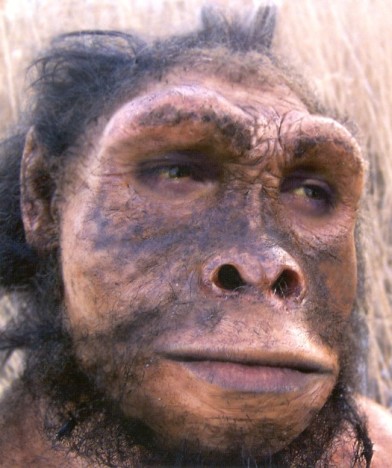
South Africa aside, we find one last bastion able to defend the existence of Homo habilis, and that is Tanzania. These are supposedly remnants of six individuals, found in the Olduvai Gorge in the 1960s. The Leakey clan, and a few others (Mbuika, Nzube, and Johanson) made the finds. Interesting is that now discoverers have routinely begun naming their finds, and so we have personalized these fragments, to perhaps make them more personable.
The relevant fossils from Tanzania are OH-7, OH-8, OH 13, OH 16, OH24, on OH 62. OH 7 is the “type specimen,” here it is:
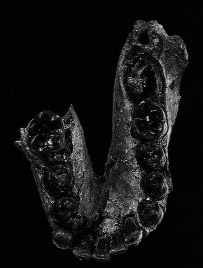
This piece is said to be 1.7 million years old. If this is not a baby ape or chimpanzee, no proof exists to show otherwise. The rear of the jaw is too narrow in relation to the front of the jaw (where the incisors are) to be anywhere near human. If it is really supposed to have been three feet tall, it would seem this jaw might actually be from a full-grown chimp instead. OH-8 appears to be a partial ape foot of some kind:
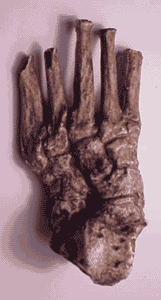
Those Leakeys, they know how to market, that’s for sure. As for OH 13, or “Cinderella” (that’s “Cindy” for short…) I have two pictures so you can see how the diagrams we often come across compare to the actual remnants they are supposed to represent:
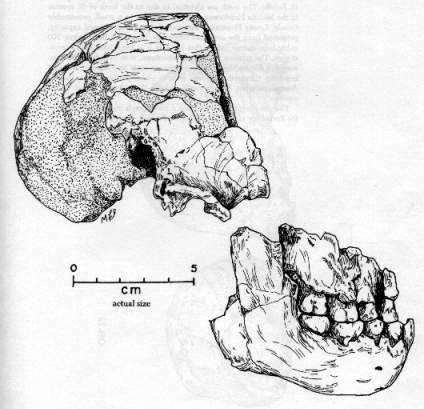
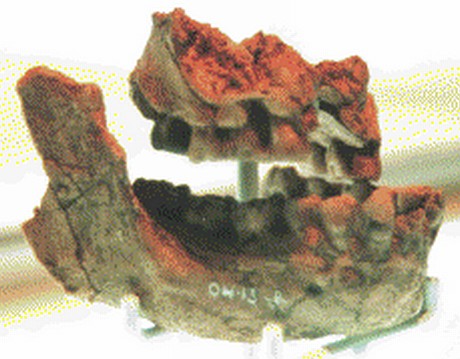
In fact this specimen has been recently reclassified as Homo ergaster as well. It is a simian or ape-like creature of some kind. Again, why so few, of our ancestors? Where did the rest go, so we can line them up, and really see? Is it even possible for something to be preserved for one million years, even in amber, tar, or ice? As we have seen from earlier examinations of the dating methods used by science, there is a lot to doubt there. Again, this ape Cindy could be from only 5000 years ago, regardless of the age of the carbon it ingested, or became.
That leaves OH 16, OH 24, and OH 62. OH 16, known as “George” comes with a story to him attempting to justify the sorry state of his remains. Maybe the sculptors are trying to break into the creative writing field. The tale told is that this poor chap’s skull was trampled by a herd of cattle, and that’s why all we have is some teeth and few other fragments.
Do they take us for fools, really, and assume that people who make a living gathering bones from miles away, who dig to profound depths, cannot gather up what was dispersed by a herd of cows? Why not glue them back together as usual?
OH 24, or “Twiggy,” is another example in ambiguity and exercise in possibility. The cranium was found crushed also (maybe the same herd of skull-crushing cattle…). Here below are four views of the reconstruction, showing clearly the artistic impetus, and then to the right an x-ray of a chimp skull at the bottom, and the lower half transposed onto the fossil, giving a more accurate representation that is appears to be a chimp, or ape skull in an early stage of development:
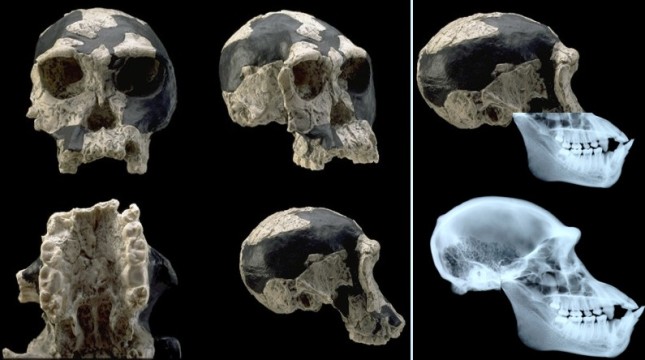
Even the jaw is simian in character. Without doubt, another ancient ape. Finally, we have OH-62, “Dik Dik Hominid”. Discovered by Don Johanson in in 1986, this collection boasts a whopping 300+ bone fragments, which sounds really impressive, until you see the actual evidence for the Dik Dik:
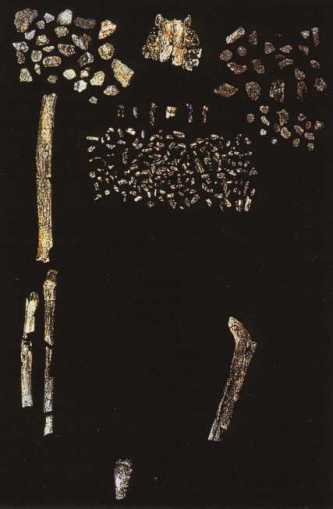
That’s a pretty messed up Dik Dik. From these fragments, and we have covered just about every piece of bone offered for the possible existence of any Homo habilis, anthropologists and archaeologists nevertheless by them claim to have enough proof to call in the artists and establish a whole “semi-human” species. Here, examples of the absurdity, and again, I could multiply these Artist Conceptions easily:

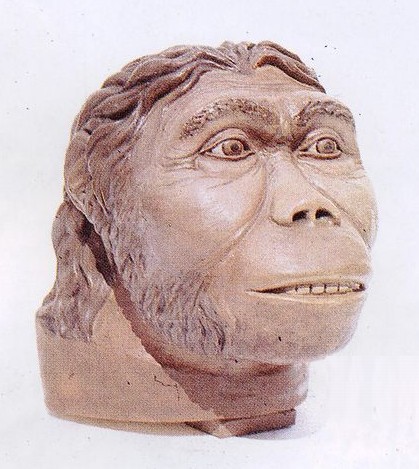


It gets difficult to argue with an opponent that can’t agree on basic facts like classification. Anyway, Handy Man’s friend and compatriot is Homo ergaster, and often they are sometimes lumped together as one species. Arguments still exist regarding their classification one to another also, and so how they fit in the Evolution story. Ergaster will be our subject, next time.




Elizabeth
October 30, 2011 at 2:08 pm
Son una miierda .l.